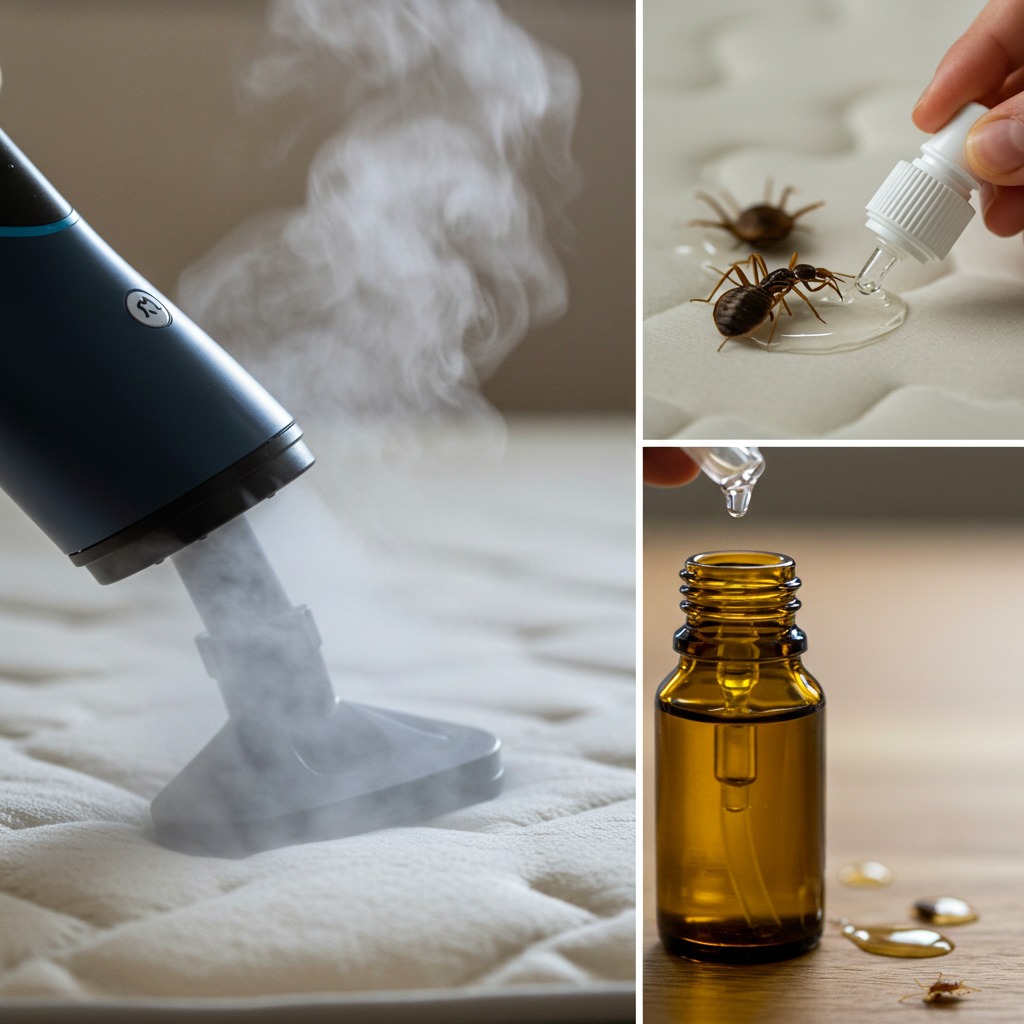ADVERTISEMENT
Inspect these areas thoroughly to look for signs of bedbugs, such as dark spots (feces), shed skins, or actual live insects. Make sure to pay close attention to cracks, as bedbugs are experts at hiding.
#### 2. **Prepare the Area**
Before applying diatomaceous earth, it’s important to prepare the area:
– Remove any bedding, clothing, and personal items from the affected area.
– Vacuum the floors, bed frames, and furniture thoroughly to remove any dust, dirt, or bedbugs that may already be present. This will allow the diatomaceous earth to work more effectively.
#### 3. **Apply Diatomaceous Earth**
– Use a fine dusting applicator or sifter to apply a thin layer of diatomaceous earth to the identified problem areas. Apply the powder along baseboards, around the edges of mattresses and box springs, inside cracks and crevices, and on any other surfaces where bedbugs may be hiding.
– Be sure to apply a light, even layer. You don’t need to overdo it—just a fine dusting will do the trick.
#### 4. **Let It Sit**
Once you’ve applied the diatomaceous earth, leave it in place for at least **7 to 10 days**. During this time, the bedbugs will come into contact with the powder and begin to dehydrate. As they continue to crawl through the powder, they will eventually die off.
#### 5. **Clean Up**
After the treatment period, you can vacuum up the diatomaceous earth. Be sure to clean up thoroughly, but avoid using a wet mop, as diatomaceous earth needs to remain dry to be effective. Dispose of the vacuum bag immediately or clean the vacuum filter if you are using a bagless vacuum.
#### 6. **Repeat If Necessary**
If you still notice signs of bedbugs after the initial treatment, reapply the diatomaceous earth to the affected areas. You may need to repeat the process several times to completely eliminate the infestation.
—
## **Additional Tips for Preventing Bedbugs**
While diatomaceous earth is an effective tool in eliminating bedbugs, it’s also important to take steps to prevent future infestations. Here are some additional tips to keep your home free of bedbugs:
### **1. Regular Inspections**
Perform regular inspections of your home, especially after traveling or staying in hotels. Pay attention to areas where bedbugs like to hide, such as cracks, crevices, and the seams of mattresses.
### **2. Protect Your Mattress**
Consider using a bedbug-proof mattress encasement. These special covers prevent bedbugs from getting in or out of the mattress, making it more difficult for them to establish a home.
### **3. Eliminate Clutter**
Clutter provides ample hiding spots for bedbugs, making it more difficult to detect and eliminate them. Keep your living space tidy and minimize clutter, particularly in areas where you sleep or rest.
### **4. Wash Bedding Regularly**
Wash your bedding and linens frequently in hot water. Bedbugs can survive in sheets or blankets, so cleaning them regularly will help prevent an infestation.
### **5. Seal Cracks and Gaps**
Seal any cracks or gaps in walls, baseboards, and furniture where bedbugs could hide. Pay attention to areas near windows and doors where pests may enter.
—
## **Conclusion**
Bedbugs are a persistent and troublesome pest, but with the right tools, they don’t have to take over your home. Diatomaceous earth is a powerful, natural solution that can eliminate bedbugs in record time. It’s safe, non-toxic, and highly effective at killing bedbugs by dehydrating them through their exoskeletons.
By following the steps outlined in this article, you can eliminate bedbugs from your home without the use of harmful chemicals. Remember, persistence is key, and using diatomaceous earth in combination with preventive measures can help ensure that your home stays bedbug-free for the long term.
If you’re dealing with a bedbug infestation, don’t wait—try diatomaceous earth today and experience how quickly it can solve your bedbug problems.
